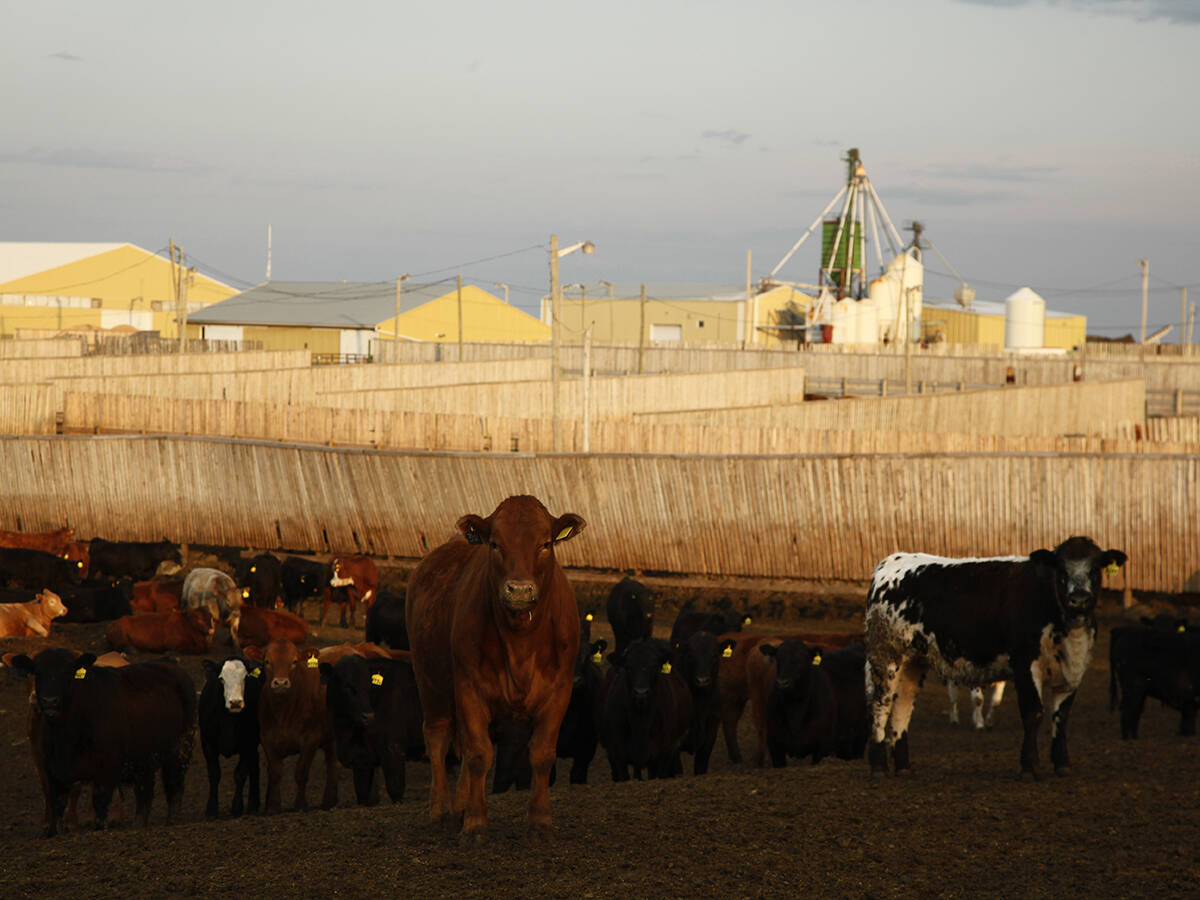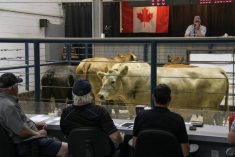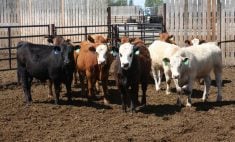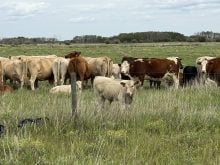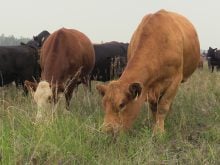This cattle market information is selected from the weekly report from Canfax, a division of the Canadian Cattlemen’s Association. More market information, analysis and statistics are available by becoming a Canfax subscriber by calling 403-275-5110 or at www.canfax.ca.
Fed prices still strong
The high western Canadian fed cattle prices of the last few months have started to moderate, with the market steady during the week ending Sept. 26.
Read Also
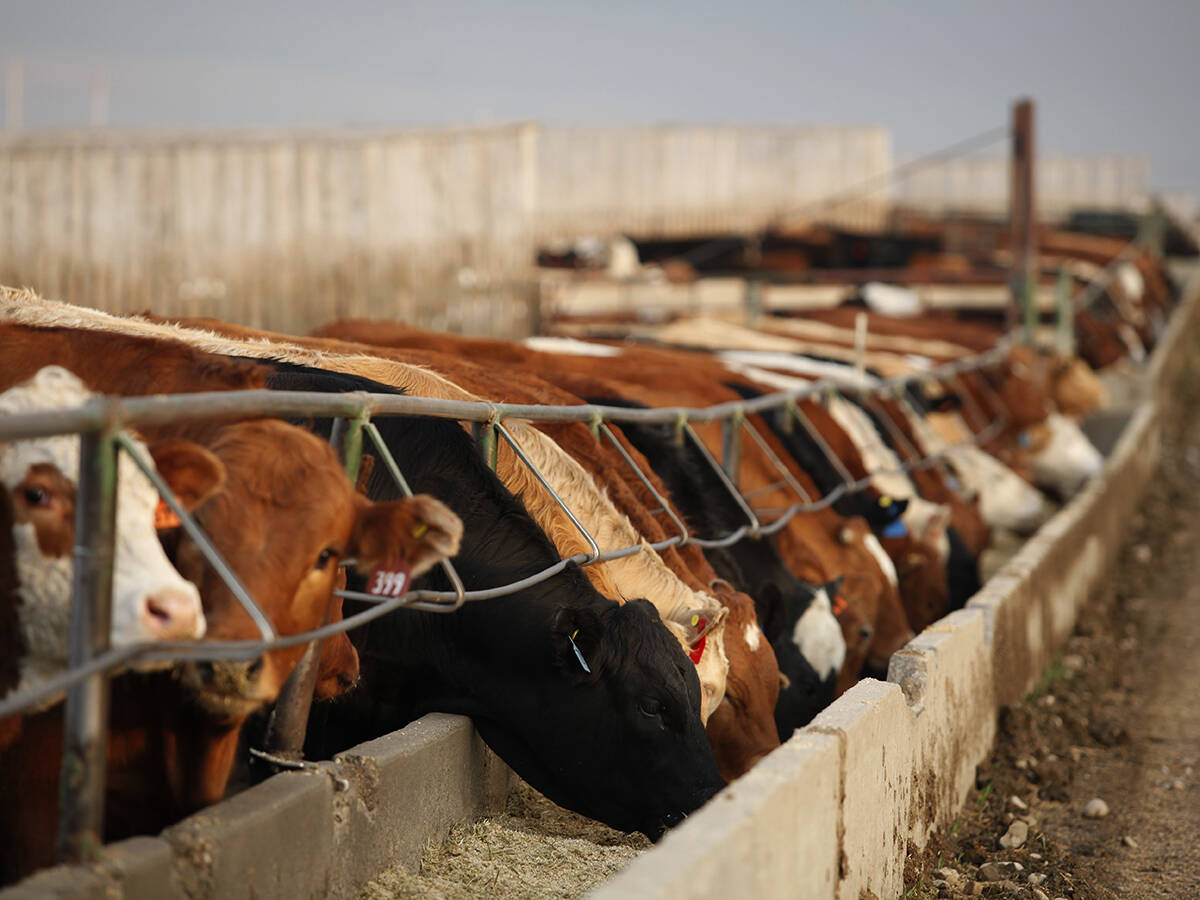
Feeder market feels vulnerable at historical highs
For the week ending Sept. 27, western Canadian feeder cattle markets traded $10 per hundredweight higher to $10 per cwt. lower compared to seven days earlier.
Alberta fed steers closed the week at $312.75 per hundredweight, rising by a mere $0.23 per cwt. from the previous week . Heifers were up $1.81 per cwt., finishing the week at $311.01 per cwt.
Dressed sales were fully steady with the previous week , reported in the range of $520-$525 per cwt. delivered. Cattle that traded were scheduled for November delivery.
There was mixed competition on the cash market, and interest from U.S. packers continues to be limited.
The Alberta fed cash-to-futures basis was -10.06. This was 2.06 weaker than the five-year average.
In September, fed steers averaged an annual high of $313.98 per cwt., climbing $9.91 per cwt. from August. This was the third-largest monthly rally seen thus far this year.
No cash sales were reported for this period in Ontario, and packers pulled their bids.
Canadian fed cattle and cow exports to the United States for the week ending Sept. 13 were 11,026 head, 15 per cent below the previous week’s exports.
Year-to-date exports are down five per cent from 2024, and exports have been below year-ago levels since the middle of May.
Cow prices strengthen
Western Canadian butcher cow prices during the week ending Sept. 26 were the highest since the start of July.
Cow prices were up $2 per cwt., and D2 cow prices averaged in the mid-$220 per cwt.
This rally is a little later than normal, as cow prices tend to strengthen in August.
Western Canadian packers as well as feeder cow buyers were active on the market. Canfax reported that some cows from Alberta and Saskatchewan were moving east to Manitoba for slaughter.
Non-fed supplies have been tight, with many auction markets reporting only 50-200 head of cows going through the ring each week. There have been cases where there were more bulls on offer than cows.
Accordingly, packers in Western Canada have scaled back their hours.
While supplies will likely start increasing, analysts anticipate the fall cow run will be small.
Fall run gets underway
As yearling supplies began to seasonally decline, the fall calf run was getting going during the week ending Sept. 26.
A mixture of calves and yearlings were on offer. Looking at some of the pre-sort calf sales for this period, 70 per cent or more of the calves through the ring were steers.
Over the past month, prices for heavier-weight feeders strengthened by about $20 per cwt. However, these are beginning to moderate.
Many yearlings are coming out of backgrounding lots, with prices about $15-$20 per cwt. back of grass cattle.
While it can be tricky to market bred heifers in early fall, there has been strong demand this year, with bred heifers trading at a premium over open heifers. Many are finding homes on ranches. Recently bred heifers have brought around $5,500 per head, compared to last fall’s average of about $4,500 per head.
The forward delivery calf market was lightly tested the week ending Sept. 26.
Alberta and Saskatchewan steers weighing 600-699 pounds for October delivery brought an average of $642.36 per cwt., based at 613 lb. The same weight class of steers for November delivery was $625.64 per cwt., based at 626 lb.
Prices for this weight class of steers generally drops by two per cent from October to November, according to the 10-year average, as six-weight steer calf prices normally reach their low in November.
This year, the market is already pricing in this two per cent decline based on forward delivery sales.
Cutouts ease lower
U.S. cut-out prices dropped by $8-$14 per cwt. during the week ending Sept. 26.
The Choice-to-Select spread was $18.50 per cwt., which was only a bit wider than this time last year and mostly steady with the five-year average.

